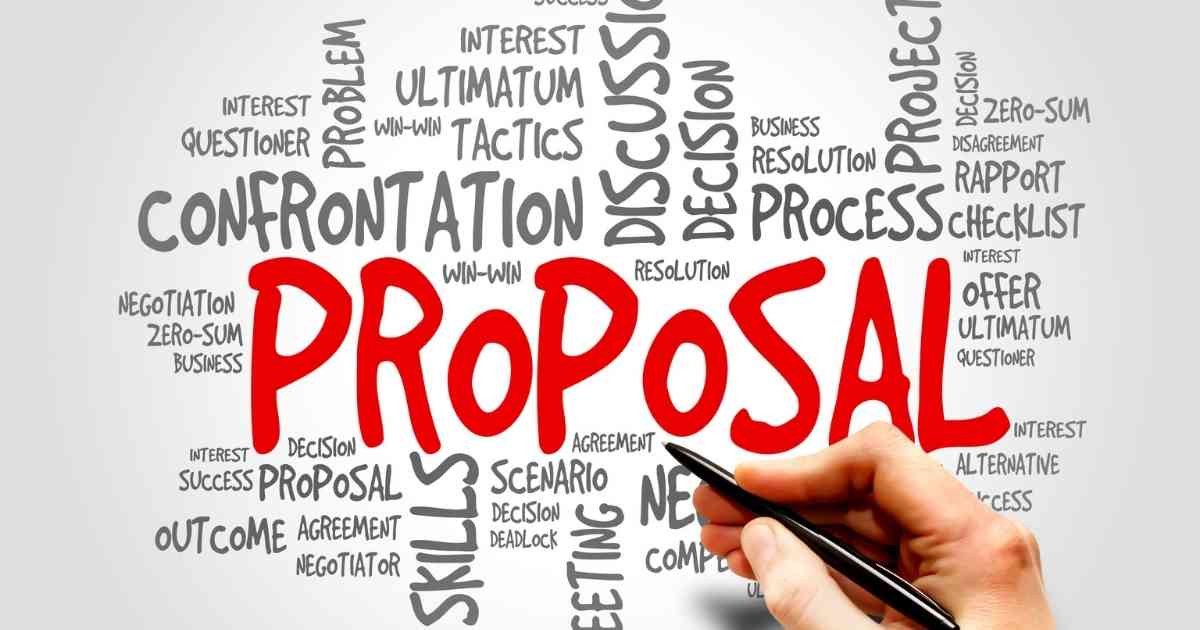Table of Contents
-
How to write a proposal that works awesome and delivers results?
- 1. What is it you are proposing?
- 2. One proposal template does not fit all
- 3. Structure your proposal
- 4. Write an intro that entices the readers to read the entire writeup proposal
- 5. Make the outcome of the proposed project clear
- 6. Show them why you are the expert in executing the proposal
- 7. Use jargon or acronyms sparingly
- 8. Know your target audience
- 9. Include graphics and stats, not just narrative
- 10. Assess and state the risk, where appropriate
- 11. Use correct tone and language
- 12. Proofread your proposal
- 13. Keep it simple, short and sweet
- 14. Use action words in your proposal
- 15. State the benefits of the proposal to the recipient
- 16. Attach the necessary documents, appendix, etc.
- 17. Factor in cost/budget in your proposal write up
- 18. Use updated data or research to back up your proposal
- 19. Understand the vision and mission of the organization
- 20. Show success stories based on your proposal concept
- 21. Use your professional network to support your proposal
- Concluding remark
Here, we discuss 21 tips on how to write a proposal that delivers great results and maximizes your opportunity to land that big project or business gig.
You’re reading this article probably because you’ve been given a task to write a proposal by your boss. Or you have come out with an initiative to approach a potential business partner.
The article can be quite lengthy (well over 2,000 words). To help you browse the content faster, feel free to use the table of contents and jump to a specific point for a detailed explanation.

How to write a proposal that works awesome and delivers results?
I have been writing and facilitating proposal-related documents for the past decade.
These documents include business partnerships, academic proposals, business funnel ecosystems, start-up proposals, research works and marketing proposals.
The purpose of this article is to help you get started with your proposal writing task.
Let’s go.
1. What is it you are proposing?
It is important to know: what are you proposing in your writeup?
You will need to understand and know the nature of the proposal even before you write your first word in the document.
Are you asking for a partnership and support in marketing and promotions?
Are you pitching for an idea or project that would require funding?
Are you recommending participation from your company in the upcoming major exhibition that requires a substantial amount of investment?
Are you writing a proposal of any kind of services where the customer is expected to pay before accepting them?
Answering these questions will give much direction to your proposal. This will also help you identify the type of proposal layout that will work best for what you are proposing.
2. One proposal template does not fit all
There really is no such thing as a proposal template that works universally for all needs.
Even though the temptation to find a proposal template online is great, resist the urge to use it entirely without doing any customization.
Yes, there are indeed thousands of proposal templates available for free download on the internet. But just because you have downloaded a template does not mean it automatically fits your proposal perfectly.
Remember, our goal here is to write an effective proposal that delivers great results. We all want something unique and original.
The only template you may adhere to is if that specific proposal comes from the company or the organization you are dealing with now.
3. Structure your proposal
It’s important to structure your proposal in a manner that will appeal to the reader.
In all cases, the structure of a proposal should be based on a certain logic or flow.
For example, here are some elements you may consider while structuring your proposal:
3.1 The problem statement
This element of the proposal will make it clear how critical or urgent that particular project is. Here, you also need to state why the current situation that the company faces needs to be changed radically.
3.2 The analysis
This element allows your reader to understand your keen observation and knowledge of the subject matter.
3.3 The recommendation
At this point, you can introduce the solution to the problem.
3.4 The benefits
This section of your proposal must immediately convince your reader why they should appreciate or accept your idea/solution.
4. Write an intro that entices the readers to read the entire writeup proposal
In your proposal introduction, give them an overview of what they will learn from your proposal.
The reader should be able to grasp the essence of the proposal in the introductory section itself.
The introduction section of your proposal must be short and to the point. It should not exceed more than 1/3rd or one-fourth of the total length.
The introduction should also act as a hook that provides a smooth flow to the subsequent sections. It should be enticing enough for the reader to read the entire proposal and reach a decision stage.
5. Make the outcome of the proposed project clear

The outcome and the output of the proposed project should become clear.
At the end of the day, how will this project benefit the organization and the stakeholders?
Will the company generate credible returns on the investment?
Will the company save expenditures with the project implementation?
Will the project produce more committed, more engaged and more motivated employees?
These are some of the questions underlying the goals and the outcome of the project proposal.
6. Show them why you are the expert in executing the proposal
Ask yourself: why would you lead this project? What are the credentials you bring to the table? It is critical to list down some of your expertise to do justice to this project.
Good credentials may come from a degree from a reputed college, years of experience in the industry, involvement in similar projects, and so on.
Mention any prior study or research you have conducted on the subject matter.
Remember, you know better than anyone else about your capabilities and skills.
7. Use jargon or acronyms sparingly
If using complex jargon or unfamiliar acronyms may confuse the reader, then avoid using them.
If you have to, define the jargon/acronyms in the first use, just like any formal document. Otherwise, the reader will not be impressed.
If you are using big words, ensure that the readers would understand these words and resonate accordingly. Remember, you are not showing how smart you are. Rather, you want to convince the reader into taking necessary actions.
8. Know your target audience
Who will read your proposal? Who will make the decision?
Knowing and identifying this person will be half the battle. The knowledge will help you tailor-make your proposal to attract and convince this person.
Is it a team of experts? Is it a committee? In any case, ensure that the decision-makers would understand your proposal easily.
You must understand who the decision-makers are in the company and who can make a difference.
Once you know this, do not shy away from using their names when appropriate throughout your proposal. It shows that you acknowledge them and respect their expertise.
9. Include graphics and stats, not just narrative

When you write a proposal, give it a good mix between text and visuals.
Include relevant graphics and statistics in your proposal.
Where relevant, create graphs, sales charts, or tables to help the decision-makers understand any complex concepts faster. It is also okay to use simple diagrams and pictures to make your point clear.
There are many tools available to help you develop great visuals, such as Canva and Piktochart. You may also alternatively use cost-effective design services from Fiverr and UpWork.
10. Assess and state the risk, where appropriate
Your proposal can sound as optimistic as it should be.
But it should also assess the associated risks relevant to the project. Again, be transparent is better than having the decision-maker knowing it sooner.
Identifying and assessing the risks is important because it shows that you are strategic. You understand all possible consequences of the project, hence would be able to control them better.
It also reassures the decision-makers that you can minimize these risks with your proposed plan of action.
11. Use correct tone and language
Use a formal and correct tone when you write a proposal. You can sound excited and enthusiastic, but the use of standard language is necessary.
Use your company tone and writing style to ensure the whole team is on the same page. The proposal content should be consistent with your website and other outreach material.
Your tone must also match what you are proposing in the document.
For example, if you propose a new lifestyle app for teenagers, you may use colloquial language and tone.
A proposal is not an email or text message. It is a formal document that should be written in the third person point of view, which means you write as if you are writing to other people about this project.
Use correct language that would make sense to other professionals outside your industry. Slang words are a definite no-no.
12. Proofread your proposal
To avoid any typographical or text errors, be sure to proofread your proposal before sending it out.
It is best if you have another set of eyes to look through your proposal. A peer or colleague can provide valuable feedback and ideas on improving the contents of your document.
You may also send your proposal to a writing or editing service provider at a cost-effective fee.
Additionally, tools like Grammarly and Ginger software to scan for mistakes in your proposal writeup. These are great online services that help improve the readability of written content.
Also, take the initiatives to write better. If you are a non-native English speaker, check out this article on how to improve your English writing when English is not your first language.
13. Keep it simple, short and sweet
A good proposal should be simple, short and easy to read.
Do not try to be too smart or use long words that may intimidate the decision-makers.
The length of your proposal should be relevant to the deliverables of this project if you are proposing an idea. It can vary depending on the type of project, but generally, it is okay for you to keep it short.
If you are proposing a detailed business plan, then that is another story.
These proposals usually contain lots of information and documents, which take time to review. A good rule of thumb for this type is to keep it between 5-30 pages.
14. Use action words in your proposal
The use of action words in your proposal is crucial.
They would help strengthen your assertions and demonstrate your expertise in the field.
Action words are powerful verbs that give life to your proposal content. It makes it sound real like you’ve already done all these before.
It also makes the decision-makers feel more at ease with the proposed ideas if they see action instead of inaction in the proposal.
Some examples of action verbs are: developed, designed, analyzed, implemented, achieved, discovered.
These words give more power to your proposal content. You can even use them in your subtitling to emphasize points that you want the decision-makers to remember.
15. State the benefits of the proposal to the recipient

State the benefits of the proposal to the decision-makers. Then, put yourself in their shoes and ask this question, “What’s in there for me?”
Remember that the decision-makers are in a different position compared to you. Therefore, they may need some convincing.
Hence, state why they should listen to what you say and see your vision of this project.
Benefits can be financial, social, or environmental, so choose one statement that best convinces them to do business with you.
16. Attach the necessary documents, appendix, etc.
Alongside your proposal, attach other necessary documentations, appendices, regulatory letters and so on.
The proposal by itself is just a brief overview of the work that you are proposing to do. It would be best to attach all the necessary documents supporting your proposal if decision-makers have questions.
An example of an appendix is attaching sample sketches of the business cards if they hire you for this project.
The attachment can also include an artist’s architectural impression of the completed project.
17. Factor in cost/budget in your proposal write up
Money is critical to any business. Even in government organizations, finance is a key factor.
Therefore, you must factor in the cost and budget associated with the proposal.
If the proposal is for a business, you should include expected return on investment (ROI) and anticipated revenues.
Let them know the positive impact of their partnership with your company in terms of money and growth in market share.
If you are only asking for donations or funds for nonprofit projects, state the numbers (or the range of numbers).
If you are asking for a business loan or grant, then be detailed about the costs and ensure they fully understand your proposal before making the important decision.
18. Use updated data or research to back up your proposal
A sound proposal must be backed by equally proper research and data.
Not only must the data be correct, but they should also be the most current accessible data.
This is important as things change very fast. Numbers that were relevant eighteen months ago might not be relevant today.
In a business proposal, strive to get updated information from your competitors and industry analysis.
You can also present data from surveys conducted within and outside the organization and include other general market insights to support your position.
All these will give more value to your proposal.
19. Understand the vision and mission of the organization
Take the initiative to understand the mission and vision of your company or organization very well.
If you are approaching an outside organization, carry out the groundwork to understand their vision and mission.
Workable proposals are those aligned with a company’s vision and mission.
Good proposals also take into account the organization’s short and long-term direction.
Proposing big printing projects to a company undertaking the path of digitization would not cut it for you.
Take this advice in mind when thinking about how to write a proposal with impact.
20. Show success stories based on your proposal concept

Have there been circumstances this proposal has already worked in the past?
If yes, then show it.
If not, you can still create a case study based on your proposal concept alone. Show the decision-makers why this could work and how the project would benefit the key stakeholders.
You can cite other organizations or people who have successfully implemented something similar to what you are proposing.
Unless you propose a novel concept not done elsewhere, using real-life examples to support your claim is practical.
21. Use your professional network to support your proposal
If you are not working with the organization currently, try reaching out to their key staff and clients who have worked closely with them in the past.
Ask for testimonials that would help convince stakeholders to implement your proposal.
This will be an added advantage since they could present people already using your product or service.
Show them the numbers and the investment return you have generated for their colleagues, staff, or clients in the past.
These testimonials would be a reflection of your image as a professional in this line of work.
Concluding remark
I hope this list of 21 tips on how to write a proposal will be helpful for you in preparing your upcoming proposal documentation.
Certainly, these tips have been helpful to me and will remain my own reference for upcoming writeups that need to be done.
If you have any questions or additional tips, please post them in the comments section below. I would be glad to answer or listen to your new ideas.

7 thoughts on “21 Tips on How to Write a Proposal That Delivers Great Results”